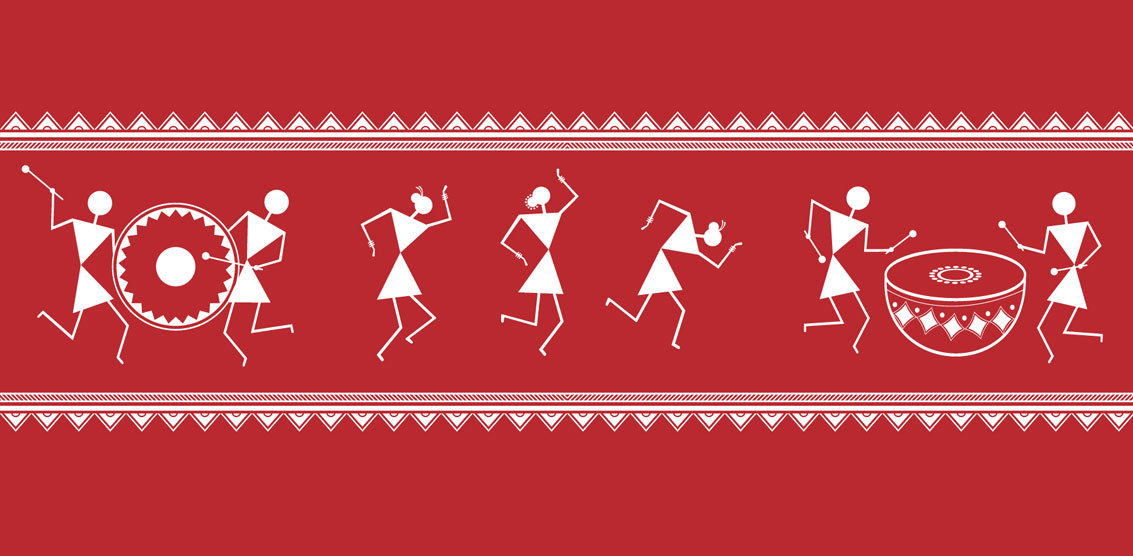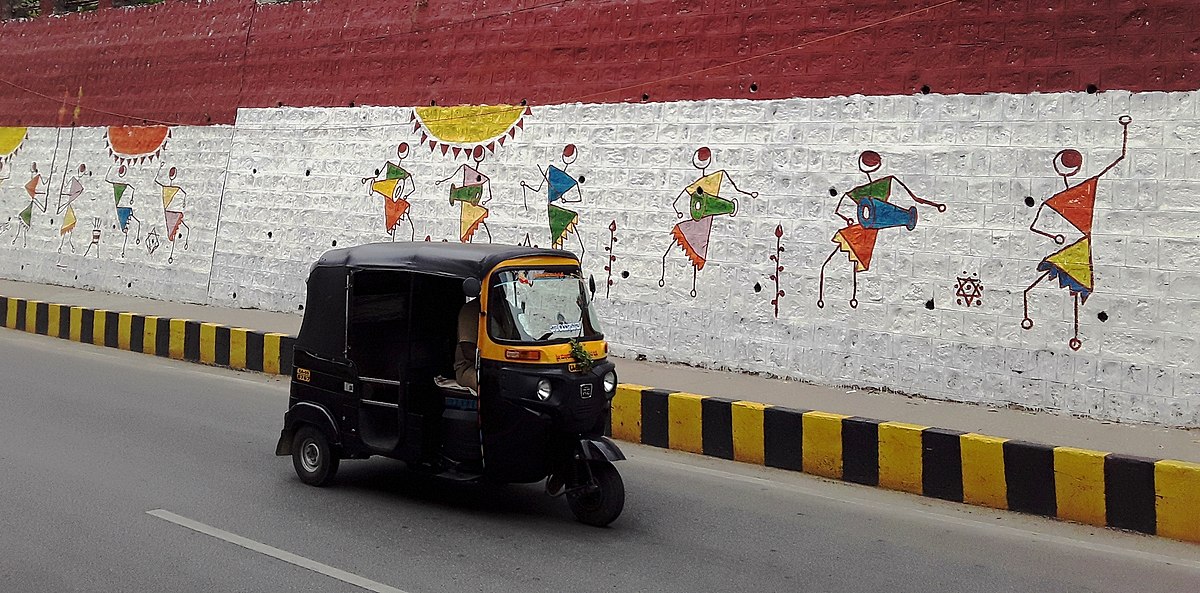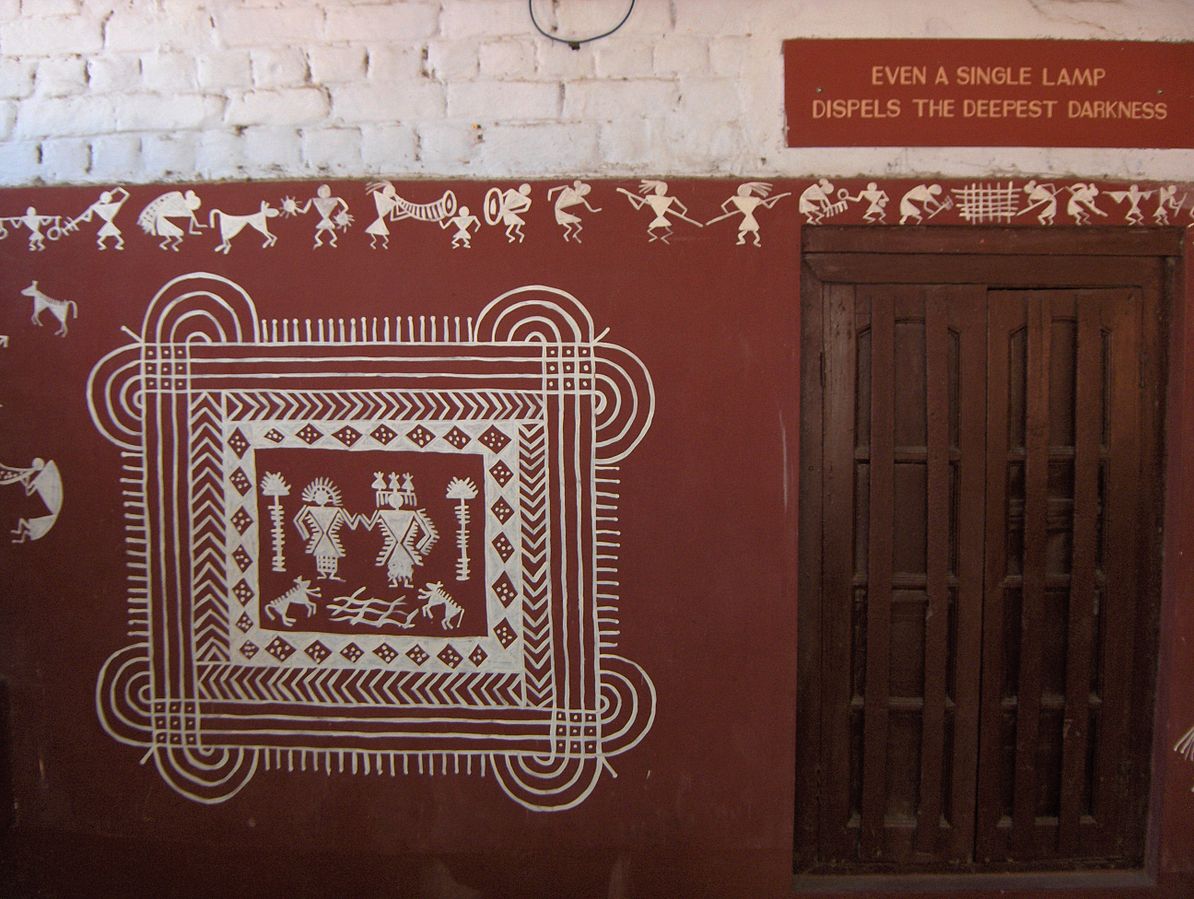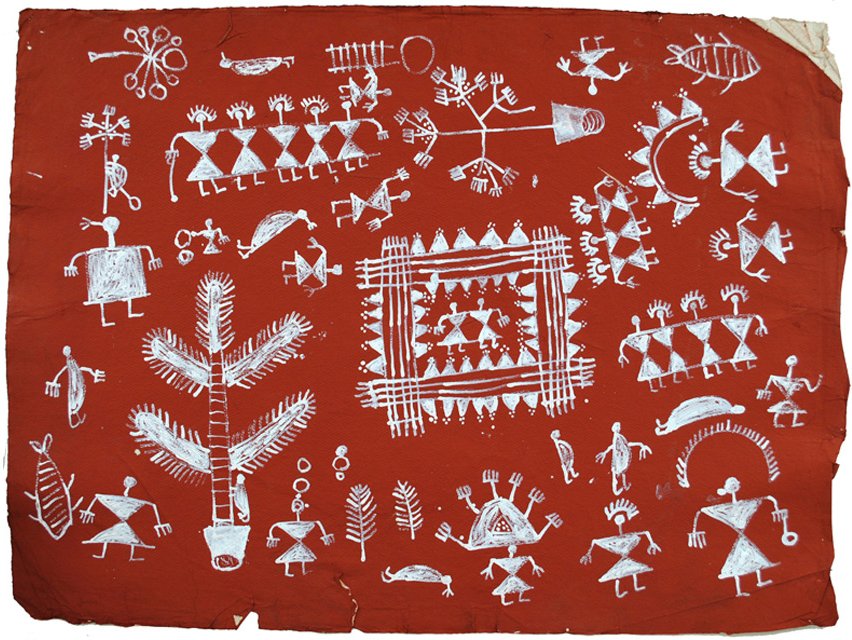
Art reflects the reality in which people live. Paintings are one of the art forms which provide a gateway to the life of the people living in the area. The art form of Warli painting has originated and evolved in the Warli tribe, which is the largest tribal group in the western outskirts of Maharashtra. Its roots in the western part of Maharashtra namely the Konkan, Dahanu, Palghar region across the Sahyadri hill ranges.
Nature of Warli Painting

Yashodhara Dalmia, an art historian claims that the art form has been existing for centuries. She says the art form was a sensation when it originated. It did not come into contact with the modern society until the 1970s, although it dates back to the 10th century A.D. Even though it’s place of origin was so close to one of the largest metropolitan city Mumbai, the art form has survived its original form due to the rejection of modernization by the tribal people. These paintings are very similar to the ancient artwork we find in caves. The concept of Warli painting is centered around elements of nature and depict social life.
The theme of the Painting
In the beginning, the paintings were drawn on the walls of houses that were red in color due to their composition being a mixture of branches, earth, bricks, red mud, etc. The paintings were made of white color which essentially was made of the paste of whole rice.

The earliest paintings were a loose pattern of sets of geometrical shapes such as triangles, circles, and squares. Each symbol depicted elements of nature-based on their observations of nature. The circle represented the celestial bodies, the triangle represented the hill, mountains and the trees whereas the squares seem to be the representative of structures created by humans in nature.
Symbolism in Warli Paintings
Patterns of these symbols are used to represent some other life forms like animals and birds. The paintings are very aesthetic and look extremely intricate. In their earliest form, these paintings were supposed to be made by married women also known as Suhasinis in Marathi. Women used to paint in groups. The art form depicted the daily social activities in the life of the tribal people. The natives have painted their way of agriculture, marriages, children playing, their various dance forms. Later, after the world got acquainted with this fine art form, the commercialization of the art form began, the painting was made by many people other than just married women and many modern motifs like bicycle, kite, etc. were added.

These paintings are the perfect portrayal of the life of the tribes in the area. Their farming style, the rituals during marriages, their Tarpa dance form; one can get to know about these other artforms through their paintings. In contemporary times, the Warli print can found not only on houses but also on fabrics like sarees; artifacts and home décor.
Relevance in Contemporary World
I believe that there was certainly a spiritual basis for the portrayal of geometric designs. The circle as the representation of the circle of life, the triangle as the hierarchical representation of one god, etc. The Warli Painting art form is indeed an extremely fine, intricate, aesthetic art form that provides an insight into past times and the activities ancient people indulged in. The changes and addition of patterns to the art form due to commercialization might lead to its dilution, but I feel the Warli art form is here to stay!

Pingback: Nirmal Paintings- The Art in Partnership with Nature - Auchitya